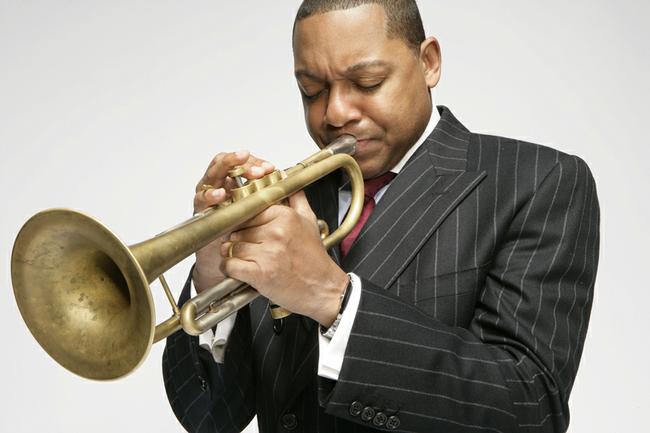Wynton Marsalis, perhaps the most seminal jazz figure of the past three decades, is certainly not a name to pass up when he and his ensemble roll through town. The great legends of the genre, musicians like Miles Davis, John Coltrane and Thelonious Monk, are long gone, but a player of Marsalis’ caliber is the best we can do as 21st century jazz fans. And on Tuesday, he and his ensemble Jazz at Lincoln Center Orchestra certainly did not disappoint.
The orchestra opened with a big band rendition of Monk’s composition “Four and One,” which featured Marsalis delivering some expert trills and leads in his extended introduction. Trombones, saxophones and the rest of the trumpet section chimed in after the bandleader’s solo, but with too many moving pieces and sounds all at once, the overall effect was a sloppy tonal mishmash. A fierce, screeching alto sax solo sliced the horns away and was promptly balanced by a few bars of Elliot Mason’s trombone soaking up the spotlight.
Almost immediately, a distinct and sharp sound became apparent – drummer Ali Jackson and his perpetual, dynamic kicks and swing. Jackson, a student of jazz legend Max Roach, played with an abundance of Roach-esque metallic accents and smooth rolls. On “Criss-Cross,” Jackson dropped a rhythm that bordered on bossa nova and maintained an immaculate swing, all while throwing in thundering George of the Jungle-style rolls.
His drumming was skillfully doled out and carefully measured, especially for such a challenging piece of music; the song featured unorthodox measures and a particularly counterintuitive beat. “You gotta know what you’re doing, or (the song) will bite you,” Marsalis said as he introduced the song.
The highlight of the first act was the Orchestra’s rendition of a jazz classic: “Mood Indigo.” Mourning, muted trombone sounds melted into a conversational, ultimately relaxed clarinet solo that was soaked to the core in cool blue colors. The solo was bookended by a muted trumpet solo straight out of 1930. Dan Nimmer’s quiet piano parts held the performance together while a duet between the trumpet and the trombone traded lines.
The crowd was in for a surprise when act two opened with a wild re-telling of “The Itsy Bitsy Spider,” complete with a deep, dissonant bass rolling over a thin, almost translucent piano. The jazz flute (shades of Ron Burgundy?) and trombone provided the classic melody – minimalist yet playful. Carlos Henriquez’s bass skills finally were allowed to emerge with a sparse, yet persistently swinging solo that slid and crept like the song’s namesake arachnid himself.
Marsalis took his turn to shine on a jam session with a simple cocktail of trumpet, piano, bass and drums. He sprinted into a muted solo over a blisteringly fast bass walk and a simple, spartan piano tinkling in the background. Marsalis’ true technical savvy and mastery of rhythm was the story, but Jackson and Henriquez deserve enormous praise for the sheer velocity with which they laid down the rhythm , which was worthy of every synonym for “scorching” in the book.
The show wasn’t by any means the most impressive nor seminal jazz concert, as most of the brass section failed to stand out, but Marsalis and company did a terrific job of getting the geriatric crowd swinging in Jesse Auditorium. The bandleader was impeccable, calling out beat counts before every song and asserting his musical dominance over the crew of well-maintained and extremely proficient musicians. Regardless of the quality of the show, the chance to see a musician as acclaimed as Marsalis is an opportunity that shouldn’t be passed up. As far as classic jazz goes, you simply could not have done much better in Columbia.








